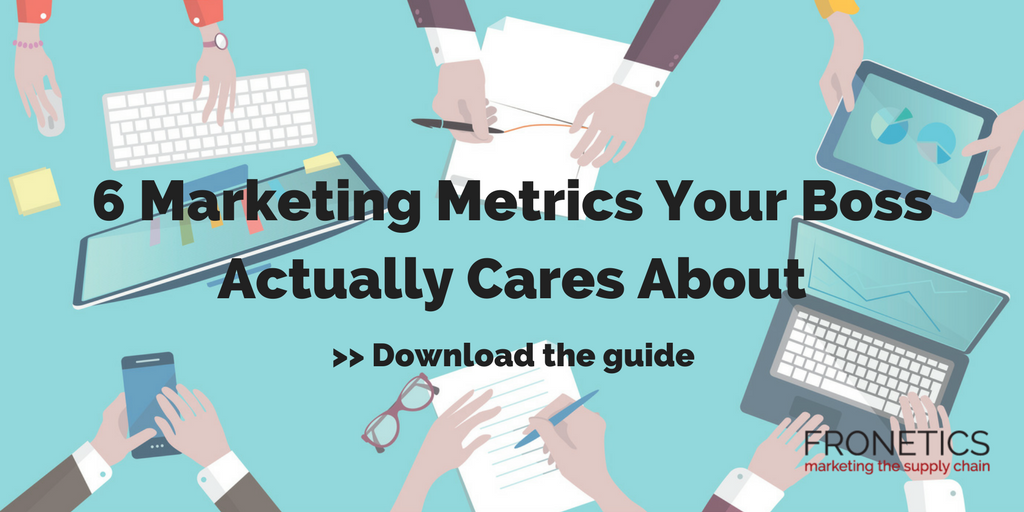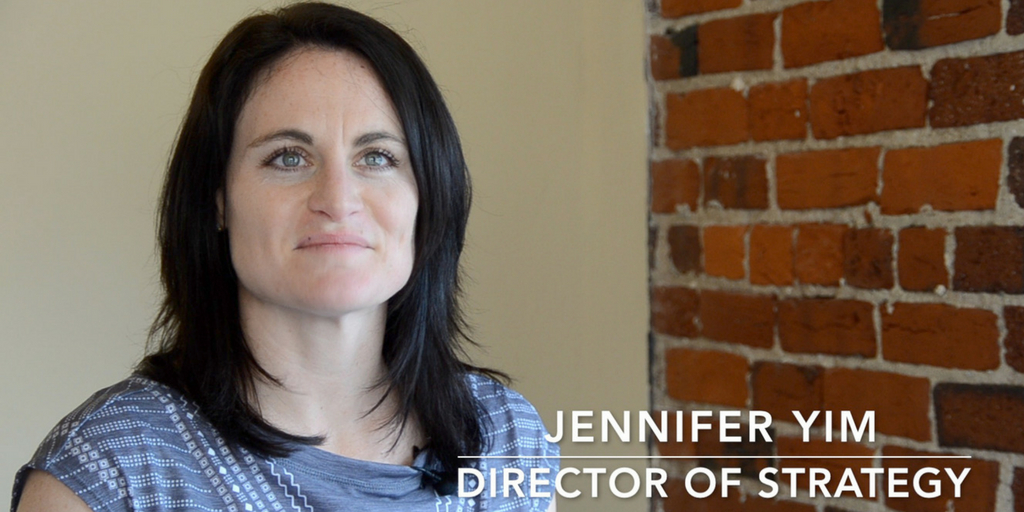
by Fronetics | Jun 26, 2018 | Blog, Content Marketing, Logistics, Marketing, Strategy, Supply Chain
More and more supply chain marketers are realizing the benefits of inbound marketing (over outbound marketing) including cost savings and increased lead generation.
Marketers are constantly coming up with new and trendy ways to attract leads. With endless platforms available to us, it can be overwhelming for even the most seasoned marketers to know where they need to focus their efforts.
In order to find the right solutions for your supply chain marketing needs, you first have to understand the difference between inbound and outbound marketing. And more importantly, how they can help — or hinder — your marketing efforts.
Outbound marketing
Outbound marketing describes any marketing approach that pushes a message onto a buyer. Traditional marketing — tv and radio ads, telemarketing, banner and display ads — are all examples of outbound marketing.
Another name for this marketing tactic is interruption marketing, as it typically tries to take “attention away from what your buyer is doing and bring it, forcibly, on to your product or service.”
Inbound marketing
Inbound marketing focuses on audiences finding you. Instead of pushing a message onto buyers, inbound marketing allows you to establish your brand as an industry leader and let interested audiences come to you. This type of marketing attempts to draw in potential customers through interesting and engaging content.
Content marketing is a type of inbound marketing. Examples include blog posts, social media, infographics, white papers, and videos.
Why is inbound marketing better for the supply chain?
Outbound marketing used to be the ‘go to’ for generating leads, but this is simply no longer the case. Marketers across industries have found that inbound marketing has many advantages over traditional marketing practices. In fact, almost three-quarters (68%) of inbound organizations believe their marketing strategy is effective, while more than half (52%) of outbound marketers don’t believe their strategy is effective.
[bctt tweet=”Marketers across industries have found that inbound marketing has many advantages over traditional marketing practices. In fact, almost three-quarters (68%) of inbound organizations believe their marketing strategy is effective.” username=”Fronetics”]
Here’s why we think inbound marketing is better for supply chain marketers than outbound marketing.
Video: Why supply chain marketers need inbound marketing
Related posts:
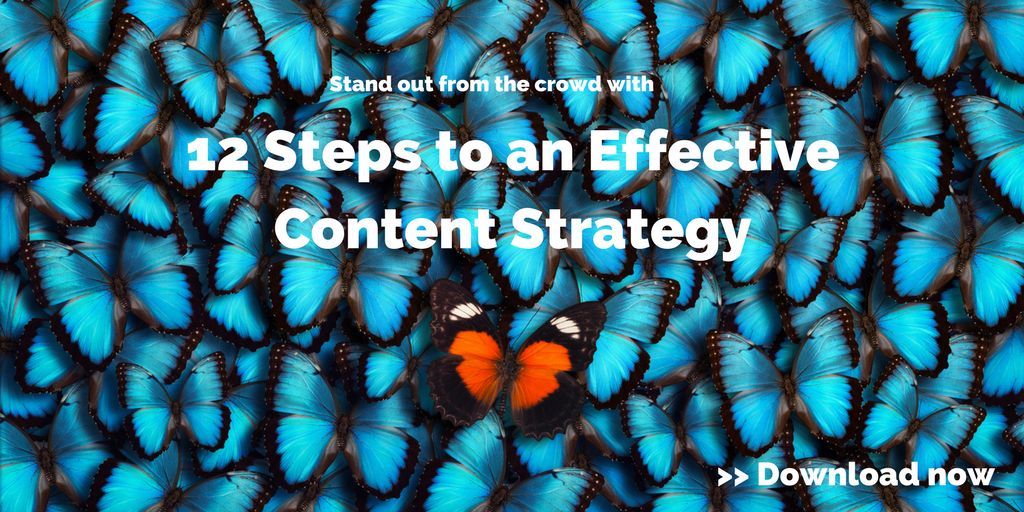

by Fronetics | Jun 11, 2018 | Blog, Content Marketing, Logistics, Marketing, Social Media, Strategy, Supply Chain
You have to take the long view with content marketing, allowing time for your strategy to develop, your brand to build authority, and your sales cycle to play out.
When you undertake a new content marketing program, you’re making a big investment. So it makes sense that you want to start seeing immediate results. But it’s important to understand from the get-go that content marketing doesn’t really work like that. Yes, you’ll start seeing incremental results within the first few months. But what we tell our clients is that things aren’t really going to start cooking with gas until the 12-18 month mark.
I’ve written before about why you shouldn’t give up on content marketing after a short period of time. While you’ll probably see growth in web traffic, improved social reach, and generally better engagement metrics like time on page, you’re not likely to see new leads or sales to speak of in the first few months after instituting a content marketing strategy.
And that can be hugely frustrating. But the key is understanding that content marketing isn’t a gimmick, and it’s not a short-term strategy. It’s a long-term solution that, if allowed to germinate and grow for the long haul, helps you build brand awareness, grow your audience, and generate new leads and sales. When it comes to content marketing, your goal is to be the tortoise, not the hare.
Content marketing is not a short-term solution
In fact, rushing your relationship with content marketing is one of the worst things you can do. Let’s talk about why that is.
First off, content marketing isn’t a one-size-fits-all solution. You need to develop a strategy that works for your business, and that doesn’t happen overnight. When we first engage with a client at Fronetics, we generally take 30-45 days to do an in-depth dive into the company’s data to develop a custom strategy that aligns with the client’s specific business goals. It feels exhaustive at times, but it always ends up paying off.
[bctt tweet=”According to the Content Marketing Institute, 11% of companies without a documented content marketing strategy find their efforts successful, compared to 60% of companies with a strategy in place. ” username=”Fronetics”]
Keep in mind that only 11% of companies without a documented content marketing strategy find their efforts successful, compared to 60% of companies with a strategy in place. And that number rises to 86% when the company designates someone to lead the strategy.
The bottom line? Skipping this step to rush to results will pretty much ensure that your efforts won’t be worth it.
Building trust
In addition to the time it takes to develop a strategy, becoming an authority — and earning the trust and loyalty of your audience — takes time. Your goal is to be a consistent source of information and value, building your brand as an expert in the area.
It goes without saying that this doesn’t happen overnight. But it’s extremely well worth the effort and the patience. Remember that the average B2B buyer consumes between two and five pieces of content before making a purchase decision. If you can position your business as the premier expert on the subject by having the best, most informative, most helpful content available, you’ll have a leg up in the buyer’s decision.
Let the sales cycle play out
Once your strategy is documented and in place, and you begin to create and curate consistent, well-researched, high-quality content, there’s also the process of letting your sales cycle run its course. You need to allow your target audience time to find you and complete thorough research about you and your competitors before making a decision.
After all, content marketing can’t shorten your sales cycle. But lead nurturing with content can keep moving your prospects down the sales funnel. And content can help your sales team close deals. But you can’t expect a buyer to read your first blog post today and make a big purchase tomorrow. That’s just not realistic.
I cannot urge you enough: Don’t give up on content marketing before you give it time work. Hang in there long enough for your initial investment to pay off, and don’t be afraid to adjust your strategy along the way. If you stick with content marketing, it will generate those leads and sales you’re looking for.
Related posts:


by Fronetics | May 24, 2018 | Blog, Content Marketing, Current Events, Logistics, Marketing, Social Media, Supply Chain
Influencer marketing capitalizes on the relationship between popular influencers and their followers to help your organization reach your target audience.
By now you’re aware of the latest marketing trend: influencer marketing. For decades, Hollywood elite have been used to promote everything from make-up to movies and now this trend is taking over the most popular social media sites.
[bctt tweet=”Why is influencer marketing so effective? Because buyers trust influencers talking about your products and services more than they trust you talking about yourself.” username=”Fronetics”]
Influencer marketing is a form of marketing in which marketers identify individuals that have influence over potential buyers and create marketing campaigns and activities around these influencers. Why is this so effective? Because buyers trust influencers talking about your products and services more than they trust you talking about yourself.
Is influencer marketing here to stay?
Linqia’s latest report, The State of Influencer Marketing 2018, shows that companies are already taking full advantage of this marketing trend. The report shows that 86% of marketers used influencer marketing in 2017, and 92% of marketers that tried it found it to be effective.
But don’t just take our word for it. Here are some statistics that prove you should pay close attention to this trend.
Infographic: Influencer Marketing and the Supply Chain
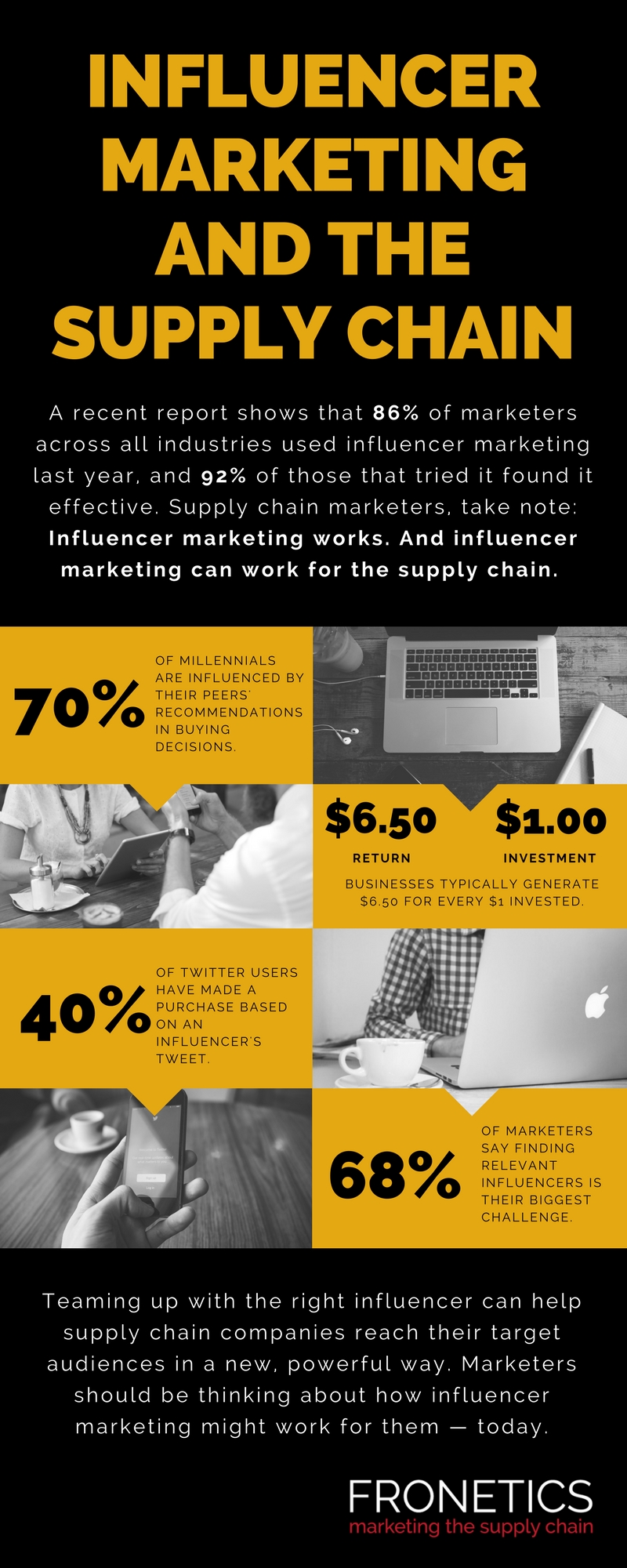
(Made with Canva)
With 39% of marketers planning to increase influencer marketing budget this year, B2B companies are quickly seeing the leverage that influencers can have over their target audiences. By teaming up with the right influencer, marketers can easily reach thousands of potential consumers, increasing website traffic and leads.
The bottom line: influencer marketing can be an extremely effective aspect of a B2B business’ content marketing strategy.
Have you tried influencer marketing? How was your experience?
Related posts:
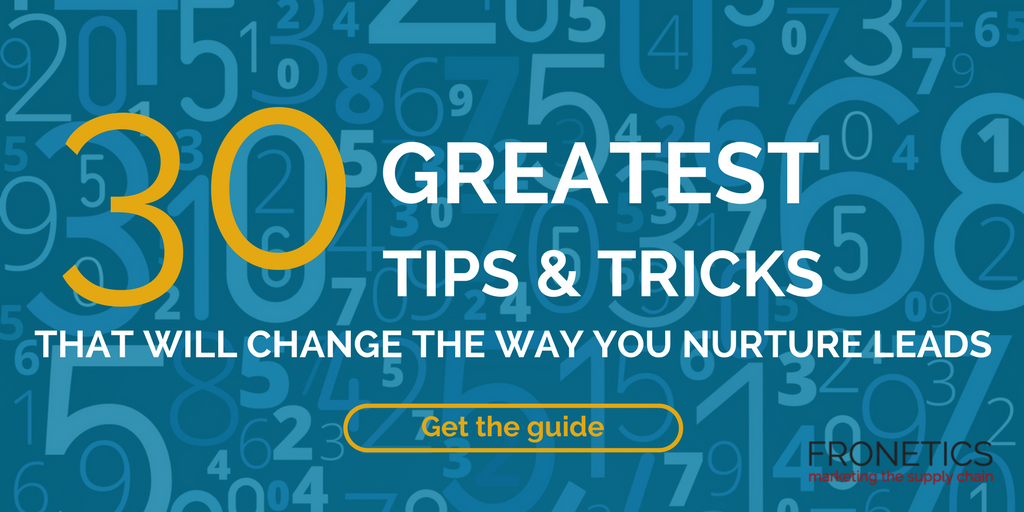

by Fronetics | May 22, 2018 | Blog, Content Marketing, Logistics, Marketing, Supply Chain
If you don’t give visitors many easy, attractive opportunities to convert on your website, content marketing won’t generate leads for you.
I’ve been noticing a trend lately that I wanted to share.
We talk with a lot of supply chain and logistics companies who are interested in the idea of content marketing. They’re catching on to the benefits, particular those involving lead generation. They know that creating high-quality, original content on a regular basis — mostly, timely blog posts on a weekly (or more frequent) basis — can drive organic traffic to their websites. And a lot of that traffic will be marketing- or sales-qualified leads.
[bctt tweet=”Content marketing won’t generate leads if you’re driving visitors to a website that stinks.” username=”Fronetics”]
That’s great! I’m glad supply chain and logistics companies are increasingly interested in content marketing. But there’s one problem: Some aren’t willing to take a holistic approach to this solution. Mostly, they aren’t willing to improve their websites.
I totally get it: Websites are a major investment — both financially and temporally. But so is content marketing. And you would be wasting a lot of time and money investing in a content marketing program if all the leads you’re going to drive to your website don’t convert or end up with mixed messaging about your business.
When content marketing won’t generate leads
Content marketing won’t generate leads if you’re driving visitors to a website that stinks. How do you know if your website stinks? Here are a few examples:
Your content is disorganized, unclear, or filled with jargon.
I see this most often. Companies create websites without considering a larger content strategy. Their company or products/services have evolved over time, but the website has not evolved with it (or someone quickly threw up a couple of extra pages without considering the site map as a whole). And, worst of all, web pages become filled with jargon and corporate speak because companies don’t take the time to strategize web page creation as part of that larger content strategy.
Messaging on your website pages serves internal purposes rather than helping customers.
So many businesses create their websites and fill pages with information about their company. “Wait, isn’t that what a website is for?” you might be asking.
No, I would argue. Your website, like your content, should service the customer first. You should design it with the user in mind, helping that prospect find the information they’re seeking and move seamlessly down the sales funnel.
Sure, you should include information about your company on your website. But too many times I see organizations forget about their customers in the creation of their sites. And when prospects visit, they’re caught in a web of the company’s self-promotion — an no closer to making a purchase than before.
There are no opportunities for conversion.
This one seems obvious. But, for some reason, companies frequently create websites hoping to generate leads but give visitors few (or hidden!) opportunities for conversion. If each page doesn’t have a clear call-to-action, specific to the page’s content, with the opportunity to submit contact information, how do you suppose visitors are going to become leads? I’ll say from experience, very few, if any, will proactively reach out and ask to join your email list.
Get it together
If you’re going to make the significant investment in content marketing — and lead generation is your primary goal — you have to think about your website, too. Otherwise, the traffic you’re driving to your site will never convert. And you’ll have wasted your time and money.
Want to make your website an effective lead-generating machine? Stay tuned for part 2 of this post tomorrow: 5 Tips to Generate More Leads on Your Website.
Related posts:


by Fronetics | May 17, 2018 | Blog, Content Marketing, Data/Analytics, Logistics, Marketing, Social Media, Supply Chain
These metrics to benchmark marketing performance will give you insight into how your brand stacks up against your competition.
A few months ago, the winter Olympics were in full swing, and Mikayla Shiffrin became the youngest slalom champion in Olympic alpine skiing history. Shiffrin achieved this incredible record, not only working to beat her best personal performance, but also that of her biggest competitors. After all, you don’t become a two-time Olympic gold medalist without the knowledge — and drive — to beat out the world’s best athletes.
You have to know how your competitors are performing to be the very best at what you do. That goes for Olympic athletes and supply chain companies alike.
We call this benchmarking performance. For we marketers, it’s important, albeit difficult, to find metrics to benchmark marketing performance. We tend to turn inward to focus on key performance indicators (KPIs), like website traffic, social engagement and conversion rates. But it’s time to start looking outward, as well.
[bctt tweet=”Competitive benchmarking gives brands the ability to benchmark their marketing performance against that of their competitors, giving you the knowledge and drive you need to improve your performance and chance of success.” username=”Fronetics”]
Competitive benchmarking gives brands the ability to compare themselves against a number of competitors using a set collection of metrics. These metrics allow you to benchmark marketing performance against that of your competitors. This will give you the knowledge and drive you need to improve your performance and chance of success.
Here are four metrics to benchmark marketing performance against your competitors.
4 metrics to benchmark marketing performance against your competitors
1. Content
Benchmarking your content allows you to compare the differences and similarities between you and your competitors’ types and relevancy of content. Are they focusing on video content or blog posts? Are they creating infographics? How often are they posting content?
2. Social activity
Knowing what social media platforms your competitors are using is critical in today’s digital marketing world. Are they having success on a specific platform? Are you using the same platforms? And how often are they posting on social media? How do you compare? Knowing when and where to post on social media can help get you in front of your target audience.
3. Social engagement
You’re posting and tweeting, but are audiences interacting with your content? Benchmarking your social engagement against your competitors lets you see if and how audiences are interacting with your posts and videos. How many likes and shares are you receiving? And how many are you competitors?
4. Keywords and topics
We talk a lot about the importance of keywords and topics. After all, that’s how audiences are searching for — and finding! — your brand and your competitors. Using online tools like SERPS, you can easily determine how you and your competitors rank for specific keywords and topics.
Analyze and adjust
Use these metrics to benchmark marketing performance. Once you have collected data, you can start analyzing your results. How does your marketing strategy stack up against your competitors and industry leaders?
Benchmarking allows you to see strategic opportunities — what you’re doing well and what you need to improve. You’ll gain valuable insight into what your competitors are doing better than you. Use this knowledge to improve your strategy. After all, action is key!
Which metrics to benchmark marketing performance do you use?
Related posts:
